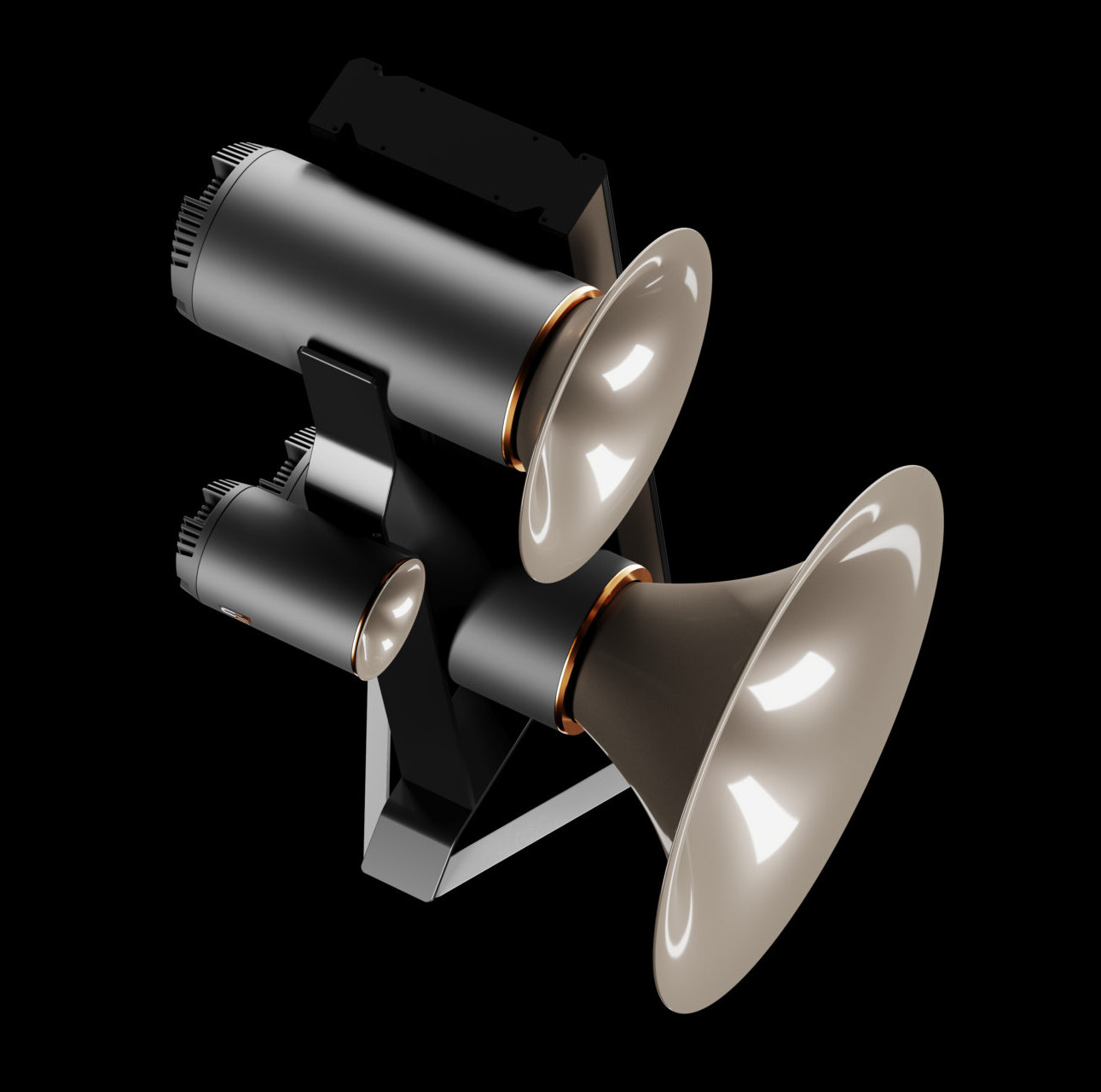The really good news is that the Trio G3’s passive crossover is both beautifully integrated and brings a relaxed, holistic quality to the sound, making this the most forgiving Trio yet. There’s no way the passive speaker is going to match the sheer immediacy and dynamic range of the active version and sensibly it doesn’t try.
Visit a hi-fi show and all too often you’ll find the rooms featuring horn speakers also featuring blues and big-band, girl and guitar. It’s programme material designed to play to the speaker’s strengths (their clarity, immediacy and uninhibited dynamics) rather than their weaknesses (integration, overall coherence, imaging and bandwidth). A quick bit of air guitar, a lisping female vocalist on some audiophile recording and it’s job done. I can’t really blame the exhibitor for making the most of his wares, but buyer beware… Ask that same exhibitor to play something classical, preferably something orchestral and the hot-mess that results will likely have you leaving the room in a hurry – unless perhaps, that exhibitor is using Trio G3s. If you really want to understand this speaker’s strengths and what makes it so special, reach right for the material with which you think it’s least likely to succeed.
 The Benedetti Michelangeli concert performance of the Beethoven 1stPiano Concerto(Giulini, Wiener Symphoniker, DGG SLPM2531 302) is a perfect example, redolent with atmosphere, a well-developed acoustic space and credible perspective. With the Trio’s you’ll hear the microphones come up and reveal the extent of the hall, the rustling of the audience. You’ll hear Giulini’s masterful direction of the orchestra and his control of pace and level. You’ll feel the expectant tension of the (unmistakably live) audience and the drama of the uncompressed, steadily building orchestral density and power, as they prepare for the piano’s dramatic opening….
The Benedetti Michelangeli concert performance of the Beethoven 1stPiano Concerto(Giulini, Wiener Symphoniker, DGG SLPM2531 302) is a perfect example, redolent with atmosphere, a well-developed acoustic space and credible perspective. With the Trio’s you’ll hear the microphones come up and reveal the extent of the hall, the rustling of the audience. You’ll hear Giulini’s masterful direction of the orchestra and his control of pace and level. You’ll feel the expectant tension of the (unmistakably live) audience and the drama of the uncompressed, steadily building orchestral density and power, as they prepare for the piano’s dramatic opening….
All of which is to be expected – just not from a speaker that looks like this! Driven with the XA Power, the Trio G3s and the smaller, single-driver SpaceHorns deliver the sort of spatial and temporal coherence that few systems can match, regardless of type. It’s not just that the subs integrate so well with the main horn arrays. That continuity extends into the seamless integration of the three spherical horns. Defying the evidence of your eyes, the four (or should that be eight?) separate elements of the system meld into a single musical whole, devoid of discontinuities or padded frequency bands. The top to bottom evenness of the tonal and energy spectrum is impressive by any standards, but a major step forward for Avantgarde and the Trio. No doubt, the new tweeter, with its longer horn, improved driver and sliding mount (to allow for correct time alignment) plays a significant role in this. But the sheer continuity between the separate horns also suggests considerable improvements in the quality of parts and execution of the crossover. You hear it in the poised precision of the piano, the effortless sense of scale to the instrument and separation of left and right hand. You hear it in the utter fluidity of the playing, the continuity of the phrases and extended runs. Above all you hear it in the perfect weighting of the notes, the even energy spectrum, from the bottom of the keyboard to the top. Few systems are as dynamically comfortable or consistent as this and combine that consistency with serious efficiency and dynamic headroom and you’ve got the makings of something very special indeed.
Balancing act…
The secret of any exceptional system is balance and the Trio G3s are no different. It’s not just that they have wide dynamic range and bandwidth. It’s not that they have a 109dB rating for sensitivity or that all of the drivers are horn loaded. The key to their performance is that those attributes apply irrespective of frequency. The lower registers generated by the SpaceHorns are capable of exactly the same resolution, transparency, micro-dynamic discrimination and macro-dynamic ‘jump’, no matter the pitch of the voice or instrument making the demand. The result is a system that doesn’t just establish a soundstage, it maintains it: a system that holds the instruments on that stage stable in space, no matter how loud things get: a system that gets loud and can shift density without hardening or congestion. If you want to experience the stability of the Trio’s sonic presentation, reach for the Barbirolli/RPO Sibelius 2 (Chesky CR3, one of the label’s first re-issues and probably still the best thing they’ve ever done!) The composers habit of constructing his musical edifice, patchwork fashion with interjections from this group of instruments and that, layering the contributions to build ever denser and higher orchestral structures is a challenge to the temporal, dynamic and spatial stability of any system, but it’s a challenge the Trios meet head on, bringing just the right sense of irresistible, slowly building power to the piece, allowing the levels to ebb only to build them higher still, with more level and even greater intensity. The Fourth Movement finale rises and falls only to keep rising again, ever higher until you think it can’t get any more intense, that the soundstage must congeal and collapse, the sound harden and glaze over – but the Trios never take a step back, cresting the shattering peak with a majestic confidence.

